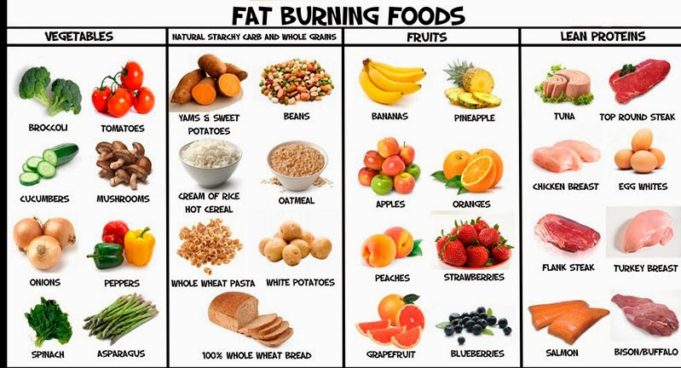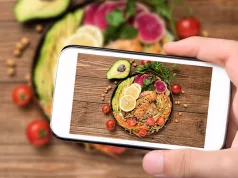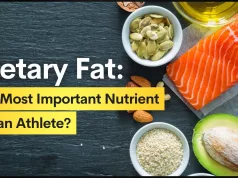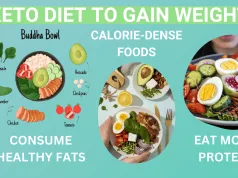Can I still eat my favorite foods while losing weight? This question haunts us like a mischievous ghost at every birthday party, holiday feast, and late-night craving. The truth is, weight loss doesn’t have to be a culinary prison sentence.
It’s about finding a balance – a happy medium between indulging in your favorites and making healthy choices that support your goals. Think of it like a delicious dance, where you learn to move gracefully between the joy of a decadent dessert and the satisfaction of a nutrient-packed meal.
This journey involves understanding how calories work, identifying the nutritional value of your beloved treats, and mastering the art of portion control. We’ll explore strategies for swapping ingredients, adjusting cooking methods, and incorporating exercise to create a weight loss plan that doesn’t leave you feeling deprived.
It’s about making informed choices that allow you to enjoy the foods you love without sacrificing your progress.
Understanding Weight Loss and Food Choices
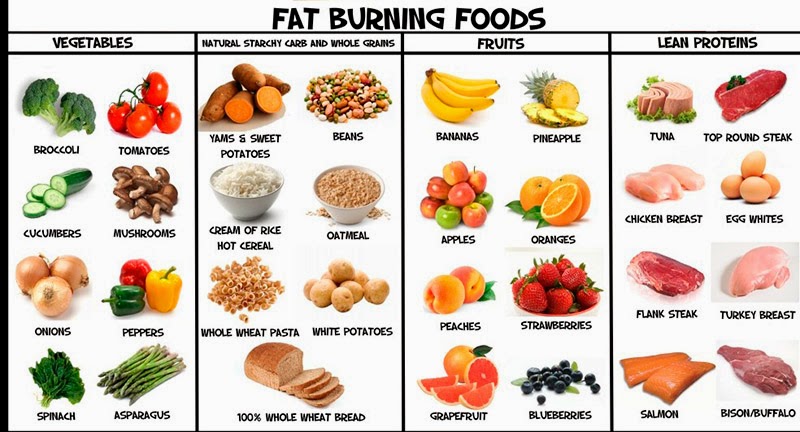
Losing weight is all about creating a calorie deficit – meaning you burn more calories than you consume. It’s like having a bank account where you’re trying to spend less than you earn. But, not all calories are created equal! Some foods are calorie-dense and provide little nutritional value, while others are nutrient-dense and keep you feeling full and satisfied.
Calorie Intake and Weight Loss
The number of calories you need to consume daily depends on your age, sex, activity level, and body composition. To lose weight, you need to consume fewer calories than you burn. A general guideline is to aim for a calorie deficit of 500-1000 calories per day.
This can be achieved through a combination of dietary changes and increased physical activity.
Contribution of Different Food Groups to Calorie Intake
Different food groups contribute to your overall calorie intake in varying ways:* Carbohydrates:Carbohydrates are the body’s primary source of energy. They are found in foods like bread, pasta, rice, fruits, and vegetables. Each gram of carbohydrates provides 4 calories.
Proteins
Proteins are essential for building and repairing tissues. They are found in foods like meat, poultry, fish, eggs, beans, and dairy products. Each gram of protein provides 4 calories.
Fats
Fats are an important source of energy and help the body absorb vitamins. They are found in foods like oils, butter, nuts, seeds, and fatty fish. Each gram of fat provides 9 calories.
Alcohol
Listen, the “can I still eat pizza” question is a classic. We all have cravings, right? But here’s the deal: you can totally enjoy your favorites without derailing your weight loss goals. The key is finding healthy swaps and strategies to keep you feeling full and satisfied.
Check out How to lose weight without feeling hungry and stay motivated for some awesome tips! Then, you can conquer those cravings with a smile (and maybe a slice of veggie-loaded pizza).
Alcohol provides 7 calories per gram and is considered empty calories, meaning it offers no nutritional value.
Nutrient-Dense Foods for Weight Loss
Incorporating nutrient-dense foods into your diet can help you feel fuller for longer, reducing your overall calorie intake. These foods are packed with vitamins, minerals, and fiber, which are essential for overall health. Examples include:* Fruits and Vegetables:Fruits and vegetables are low in calories and high in fiber, which helps you feel full and satisfied.
Examples include apples, bananas, broccoli, spinach, and carrots.
Lean Protein
Lean protein sources like chicken breast, fish, beans, and tofu are low in fat and high in protein, which helps you feel full and supports muscle growth.
Whole Grains
Whole grains, like brown rice, quinoa, and whole-wheat bread, are high in fiber and provide sustained energy.
Nuts and Seeds
Nuts and seeds are good sources of healthy fats, fiber, and protein. Examples include almonds, walnuts, chia seeds, and flax seeds.
Identifying Favorite Foods and Their Nutritional Value
Knowing the nutritional value of your favorite foods is crucial for making informed choices about your diet. This information allows you to understand how your food choices impact your overall calorie intake and macronutrient balance. By understanding the nutritional composition of your favorite foods, you can make adjustments to your diet to support your weight loss goals.
Comparing Nutritional Value of Different Food Versions, Can I still eat my favorite foods while losing weight
Understanding the differences in nutritional value between different versions of the same food can be a game-changer for your weight loss journey. For example, choosing a baked chicken breast over a fried one can significantly reduce your calorie and fat intake.
Let’s explore some common food variations and their nutritional differences.
| Food Name | Calories | Protein (grams) | Fat (grams) |
|---|---|---|---|
| Regular Pizza Slice | 300 | 10 | 15 |
| Thin Crust Pizza Slice | 250 | 10 | 10 |
| Regular Burger | 350 | 20 | 20 |
| Turkey Burger | 250 | 25 | 10 |
| French Fries (Large) | 500 | 5 | 30 |
| Baked Potato (with skin) | 160 | 4 | 0.5 |
Remember, choosing healthier versions of your favorite foods doesn’t mean sacrificing flavor! There are many delicious and satisfying ways to enjoy your favorite meals while staying within your calorie and macronutrient goals.
Strategies for Maintaining Favorite Foods in a Weight Loss Plan
Let’s face it, saying goodbye to your beloved pizza or that decadent chocolate cake can feel like a heartbreak. But fear not, you don’t have to completely banish your favorite foods from your weight loss journey. With a little creativity and strategy, you can still enjoy them in moderation and achieve your goals.
Designing a Meal Plan
A well-designed meal plan is the key to incorporating your favorite foods while staying within a calorie deficit. It’s about finding a balance that keeps you satisfied and on track. Here’s how to do it:
- Prioritize Your Favorites:Identify your top three favorite foods and plan them into your weekly menu. This ensures you have something to look forward to, keeping you motivated and preventing deprivation.
- Plan Around Your Favorites:Structure your meals around your favorite foods, using them as a focal point. For example, if your favorite is pizza, you can create a balanced meal with a small slice of pizza, a side salad, and a protein-rich dish like grilled chicken or fish.
- Allocate Calories:Once you know your daily calorie goal, allocate a specific portion of those calories to your favorite foods. This prevents overindulging and helps you stay within your target. For example, if your daily calorie goal is 1500, you could allocate 200 calories for a small portion of your favorite treat.
Losing weight doesn’t mean giving up your favorite foods, it just means finding a way to fit them into a balanced diet. But if you’re looking for a way to download your favorite videos from Yandex, you can check out this guide: cara download video yandex.
Once you’ve downloaded your favorite movies, you can focus on enjoying them while you enjoy your favorite foods in moderation!
Portion Control and Mindful Eating
Portion control is a vital aspect of managing calorie intake and maintaining a healthy weight. Here are some effective tips:
- Use Smaller Plates:Smaller plates create the illusion of a larger portion, helping you eat less without feeling deprived.
- Listen to Your Body:Pay attention to your hunger and fullness cues. Stop eating when you feel satisfied, not stuffed.
- Eat Slowly and Mindfully:Chewing thoroughly and savoring each bite allows you to enjoy your food more and feel fuller faster.
Ingredient Substitution and Cooking Methods
There are several clever ways to reduce calories in your favorite dishes without sacrificing flavor. Here are some tips:
- Swap Ingredients:Substitute high-calorie ingredients with healthier alternatives. For example, use whole wheat pasta instead of regular pasta, lean ground turkey instead of ground beef, and unsweetened almond milk instead of whole milk.
- Cook Smart:Choose cooking methods that minimize added fat and calories. Bake, grill, or roast your food instead of frying it.
- Reduce Fat:Trim visible fat from meats, use cooking spray instead of oil, and choose low-fat dairy products.
Incorporating Exercise and Lifestyle Changes
While a balanced diet is crucial for weight loss, incorporating regular exercise is equally important. It plays a vital role in burning calories, improving metabolism, and boosting overall health.
The Role of Exercise in Weight Loss
Physical activity is essential for weight management and overall well-being. It increases calorie expenditure, helping you create a calorie deficit, which is crucial for shedding pounds. Exercise also improves your metabolism, making your body more efficient at burning calories even when you’re at rest.
How Exercise Can Enhance Metabolism
Exercise stimulates your metabolism by increasing your heart rate and oxygen consumption. This process helps your body burn more calories, even after you finish your workout. Regular exercise also helps build muscle mass, which boosts your metabolism further, as muscles burn more calories than fat.
Sample Workout Routine
Here’s a sample workout routine that combines cardio and strength training, which is ideal for weight loss:
- Warm-up: 5 minutes of light cardio, like jogging in place or jumping jacks.
- Cardio: 30 minutes of moderate-intensity cardio, such as brisk walking, swimming, or cycling.
- Strength Training: 20 minutes of strength training exercises targeting major muscle groups. This can include squats, push-ups, lunges, and planks.
- Cool-down: 5 minutes of stretching.
This routine can be adjusted based on your fitness level and goals. It’s important to consult with a healthcare professional before starting any new exercise program.
The Importance of Consistency and Sustainability: Can I Still Eat My Favorite Foods While Losing Weight
Losing weight is a journey, not a sprint. While quick fixes might seem appealing, they often lead to yo-yo dieting and ultimately, frustration. The key to successful weight loss is creating sustainable habits that you can maintain for the long haul.
Losing weight doesn’t mean giving up your favorite foods entirely, it’s about finding a balance. Just like figuring out how to watch something on Yandex Browser – cara nonton yandex browser – it’s all about finding the right settings and strategies.
So, enjoy your treats in moderation, and remember, a little bit of what you love can go a long way!
This means finding a plan that fits your lifestyle, preferences, and realistic goals.
Benefits of Sustainable Eating Habits
Sustainable eating habits offer numerous benefits beyond just weight loss. They contribute to overall health and well-being by promoting balanced nutrition, reducing the risk of chronic diseases, and improving energy levels. Here’s a closer look at these benefits:
- Long-term weight management:Sustainable habits help you lose weight gradually and maintain it over time. This is because they focus on healthy eating patterns rather than temporary restrictions.
- Improved health outcomes:A balanced diet rich in fruits, vegetables, and whole grains reduces the risk of heart disease, stroke, type 2 diabetes, and certain types of cancer.
- Increased energy levels:Consistent nutrition provides your body with the fuel it needs to function optimally, leading to increased energy and vitality.
- Improved mental well-being:Sustainable eating habits often go hand-in-hand with a positive relationship with food. This can reduce stress, improve mood, and boost self-esteem.
The Drawbacks of Restrictive Diets
While restrictive diets might offer rapid weight loss in the short term, they often come with drawbacks that can hinder long-term success. These diets often focus on eliminating entire food groups or drastically reducing calorie intake, which can lead to:
- Nutrient deficiencies:Restrictive diets may lack essential nutrients, leading to fatigue, weakness, and other health issues.
- Increased risk of disordered eating:The constant focus on food and calorie restriction can trigger unhealthy eating patterns and disordered eating.
- Yo-yo dieting:The rapid weight loss often achieved with restrictive diets is usually temporary. Once you revert to your previous eating habits, you are likely to regain the weight.
- Social isolation:Restrictive diets can make it challenging to enjoy social gatherings and meals with friends and family.
Maintaining Motivation and Avoiding Cravings
Maintaining motivation and avoiding cravings is crucial for long-term weight loss success. Here are some strategies to help you stay on track:
- Set realistic goals:Don’t aim for drastic weight loss in a short period. Focus on making gradual, sustainable changes.
- Find a support system:Share your goals with friends, family, or a support group. Having people to cheer you on can make a big difference.
- Reward yourself:Celebrate your successes, big or small. This will help you stay motivated and reinforce positive habits.
- Don’t be afraid to indulge occasionally:Depriving yourself completely can lead to cravings and binge eating. Allow yourself occasional treats in moderation.
- Focus on the benefits:Remember why you started your weight loss journey. Visualize the positive changes you are making to your health and well-being.
Last Point
So, can you still eat your favorite foods while losing weight? Absolutely! It’s about finding a way to make those foods fit into a healthy lifestyle. Remember, it’s not about eliminating everything you love, but rather finding a way to enjoy them in moderation.
With a little planning and creativity, you can achieve your weight loss goals while still savoring the flavors that make life delicious. After all, a healthy journey is one that you can truly enjoy.
Question & Answer Hub
Can I eat pizza while losing weight?
You can enjoy pizza in moderation! Choose a thin crust, load up on veggies, and opt for lean protein toppings like chicken or shrimp. Don’t forget to portion control.
What if I crave sweets?
Satisfy your sweet tooth with natural alternatives like fruits, dark chocolate, or yogurt with berries. Or, try baking your own treats with healthier ingredients.
How can I avoid feeling deprived?
Focus on creating a balanced diet that includes foods you enjoy. Plan cheat meals or days to satisfy your cravings, but don’t let them derail your progress. Remember, consistency is key!















